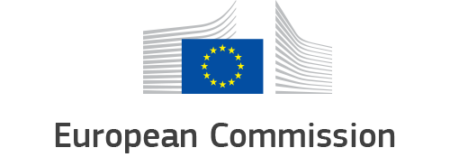Amazon, Google, Microsoft and Other Tech Corporations Sign Code of Practice for General-Purpose AI
In August 2025, a Code of practice for General-Purpose AI* was approved by the European Commission and the AI Board**. The Code of practice is a voluntary tool developed by 13 independent experts, with input from over 1,000 stakeholders, designed to help industry comply with the AI Act’s*** rules on general-purpose AI, which will enter into application on 2 August 2025.
The Code consists of three chapters:
- Transparency chapter: Offers a user-friendly Model Documentation Form, which allows providers to easily document the necessary information in a single place.
- Copyright chapter: The Copyright chapter of the Code offers providers practical solutions to put in place a policy complying with EU copyright law
- Safety & Security: Some general-purpose AI models could carry systemic risks, such as risks to fundamental rights and safety, including lowering barriers for the development of chemical or biological weapons, or risks related to loss of control over the model. The AI Act mandates that model providers assess and mitigate these systemic risks. The Safety and Security chapter contains relevant state-of-the-art practices for systemic risk management. This process implies gathering relevant information related to the model’s systemic risk by conducting interviews, surveys, community consultation or other participatory research to investigate the effects of the AI model on persons, including vulnerable groups.
Providers of general-purpose AI models who voluntarily sign the Code, such as Amazon, Google and Microsoft, will be able to demonstrate compliance with the relevant AI Act obligations by adhering to the Code. In doing so, signatories to the Code will benefit from a reduced administrative burden and increased legal certainty compared to providers that prove compliance in other ways.
* While there is no globally agreed definition of artificial intelligence, scientists largely share the view that technically speaking there are two broad categories of AI technologies: ‘artificial narrow intelligence’ (ANI) and ‘artificial general intelligence’ (AGI). ANI technologies, such as image and speech recognition systems are trained on well-labelled datasets to perform specific tasks and operate within a predefined environment. By contrast, AGI technologies, General-purpose AI like ChatGPT, are machines designed to perform a wide range of intelligent tasks, think abstractly and adapt to new situations. More information available here and here.
** The AI Board is an advisory body created by the AI Act formed by representatives from each EU Member State.
*** To recall, the AI Act aims to promote innovation while ensuring high levels of health, safety, and fundamental rights protection, classifying AI systems into different risk categories, including prohibited, high-risk, and those subject to transparency obligations. Regarding General-purpose AI, it sets rules for providers, including transparency and copyright-related rules. For models that may carry systemic risks, providers should assess and mitigate such risks.
More information on the drawing-up process of the Code of practice available here.
More information about the Code of Practice’s content and signatories available here.
Q&A about the code of practice available here.nclude the Inclusion of people with disabilities (principle 17), Education, training and life-long learning (principle 1), equal opportunities (principle 3), a Healthy, safe and well-adapted work environment (principle 10), social protection (principle 12), healthcare (principle 16), and long-term care (principle 18).
In 2021, the European Commission published the 2021 EPSR AP to implement the EPSR principles across the EU through key actions, such as the EU Disability Strategy (2021-2030), or the European Care Strategy. In the European Commission’s 2025 Work Programme**, the new EPSR AP was included, disclosing that its publication can be expected in Q4 2025.
Ahead of the drafting of the new EPSR AP, the European Commission opened a call for evidence, to which EPR participated underlining the following:
- The need for the EPSR AP to be strongly aligned with the UN Convention on the Rights of Persons with Disabilities (UNCRPD), and to include the update of the EU Disability Strategy with new 2025-2030 initiatives.
- The need to ensure the Union of Skills aligns with the EPSR, and making sure that it considers the inclusion of persons with disabilities across all its initiatives, as well as the role of service providers.
- The need to ensure the Quality Jobs Roadmap also aligns with the EPSR, and making sure it guarantees quality jobs for persons with disabilities and for the sector of services for persons with disabilities.
*The definition of call for evidence is available at the EPR Knowledge Hub Glossary of key EU policy terms, here.
** The European Commission Work Programme is the document that sets out the list of most important new policy and legislative initiatives the European Commission will take in the year ahead.
EPR contribution to the EPSR AP call for evidence available here.



 This website received support from the EPR framework partnership agreement with the European Commission, DG Employment, Social Affairs and Inclusion for 2018-2022 from the EU Programme for Employment and Social Innovation (EaSI). For further information please consult:
This website received support from the EPR framework partnership agreement with the European Commission, DG Employment, Social Affairs and Inclusion for 2018-2022 from the EU Programme for Employment and Social Innovation (EaSI). For further information please consult: